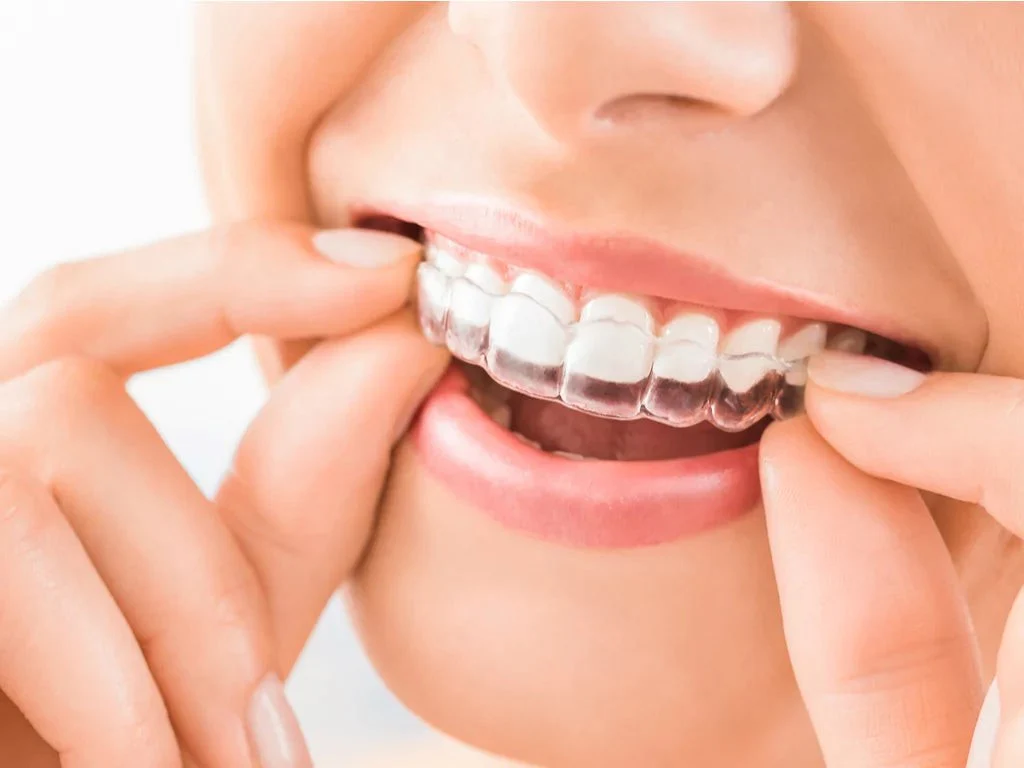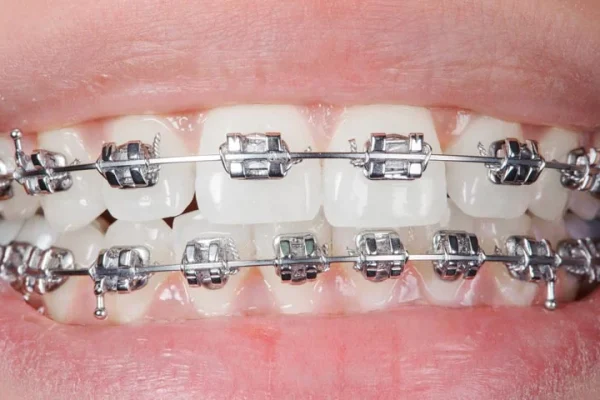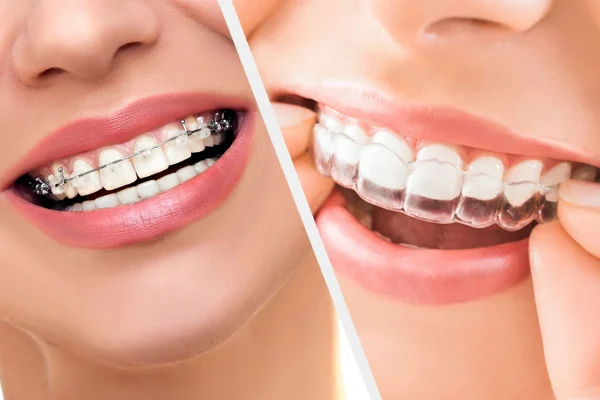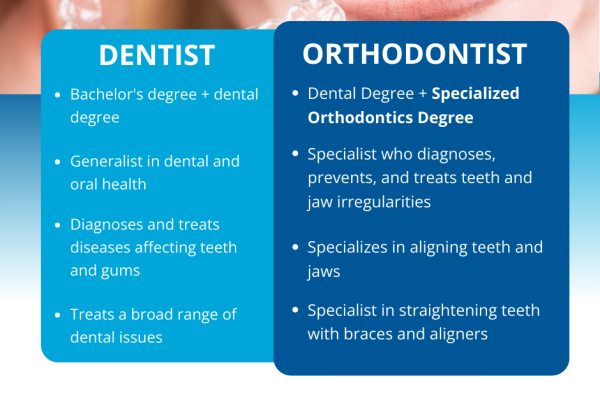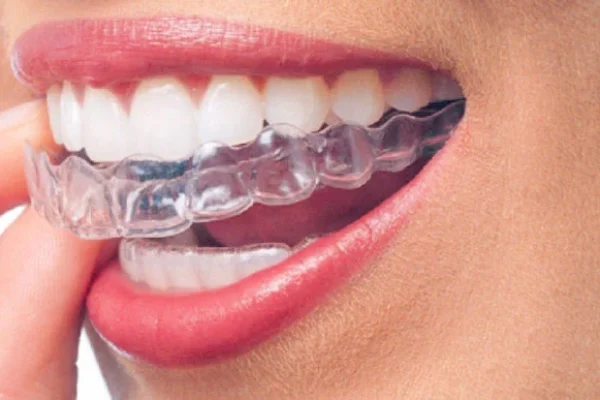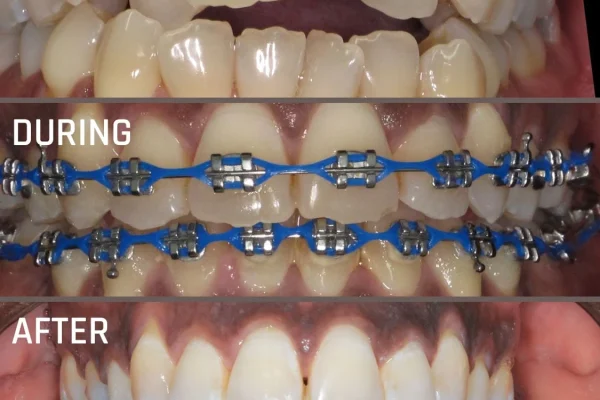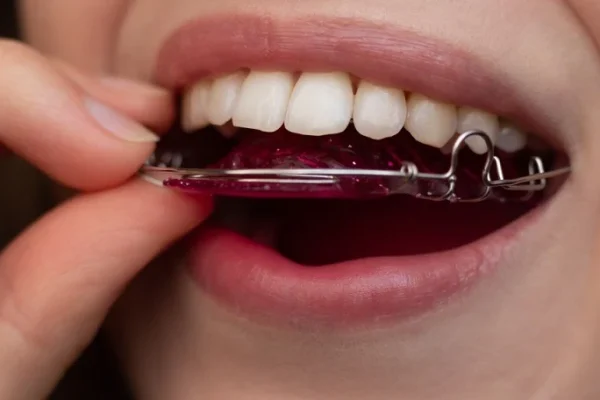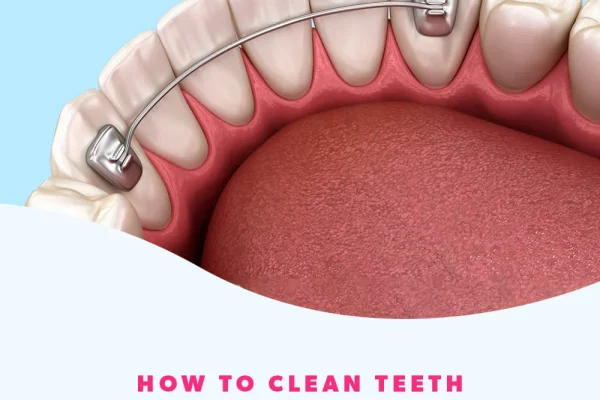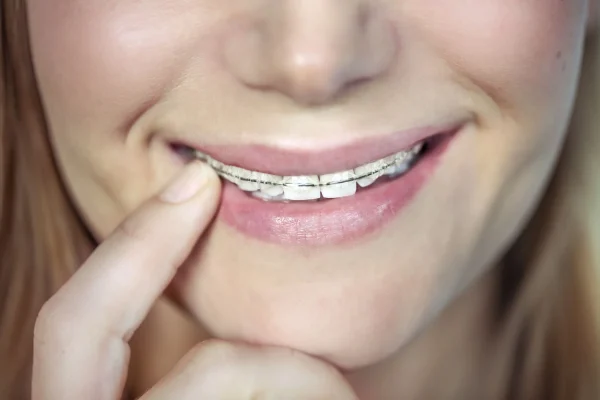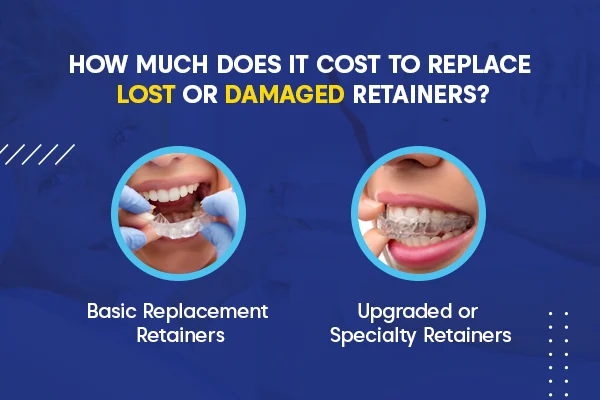
Table of Contents
ToggleKey Takeaways
-
- Retainer costs typically range from $100-$500 for a single retainer and $200-$1,000+ for a set.
-
- Major price factors include the type of retainer (Hawley, Essix, Permanent), materials used, geographic location, and the provider’s fees (dentist vs. orthodontist).
-
- The cost of the first set might be bundled into your overall orthodontic treatment fee, but replacement retainers almost always cost extra.
-
- A retainer’s fee usually includes the appliance, impressions/scans, and the fitting appointment, but always verify inclusions.
-
- Retainers are significantly cheaper than braces and are a crucial investment to protect your orthodontic results and avoid costly retreatment.
- Refunds are generally not offered for custom-made retainers, but providers usually address manufacturing defects or fitting issues by remaking the appliance.
How Much Do Retainers Cost? A General Price Overview
Alright, let’s address the elephant in the room head-on: the general cost of retainers. If you’re looking for a single, simple number, I’m afraid it’s not quite that straightforward – think less fixed-price menu, more à la carte with regional specials. However, we can certainly establish a ballpark. Generally speaking, you might expect the teeth retainer price for a single retainer (either upper or lower) to fall somewhere between $100 and $500. If you need a set (both upper and lower), you’re often looking at a range from $200 to potentially over $1,000. Now, why such a wide chasm? Several crucial factors conspire to determine the final figure on your invoice. Firstly, the type of retainer plays a starring role. A traditional Hawley retainer (the one with the visible wire across the front teeth) often has a different price point than a clear, vacuum-formed Essix retainer, or a permanent bonded retainer fixed behind your teeth. Secondly, materials matter. Higher-quality, more durable plastics or specific metal alloys will naturally command a higher price. Thirdly, geographic location is a significant variable; costs in a major metropolitan area will almost certainly differ from those in a smaller town due to variations in overheads and local market rates. Fourth, the provider’s fees – whether it’s a general dentist or a specialist orthodontist – and their specific expertise and overhead will influence the cost. Finally, consider whether this is your initial set, potentially included in your overall orthodontic package, or a replacement needed down the line due to loss or damage. Each of these elements weaves together to create the final dental retainer cost. Therefore, while these ranges offer a starting point, the absolute best way to know your specific retainer cost is to get a personalized quote directly from your chosen dental professional. Think of online figures as a rough guide, not gospel.
How Much Does a New Retainer Cost? First-Time vs. Standalone Purchase
When we talk about the new retainer cost, there’s a crucial distinction to make: are we discussing the very first set you receive immediately after your braces come off, or are we talking about purchasing a ‘new’ retainer independently, perhaps years later, or because the first one met an untimely end (often involving a napkin or a pet)? This distinction significantly impacts the perceived and actual cost. In many comprehensive orthodontic treatment plans, the cost of the first set of retainers is bundled into the total fee for your braces or aligners. You’ve essentially prepaid for them as part of the overall smile transformation package. In this scenario, while not ‘free’, the cost isn’t itemized separately at the end, making it feel integrated. However, this isn’t a universal rule. Some practices bill the initial retainers separately, so it’s vital to clarify this upfront when starting treatment – always ask “Do retainers cost extra?”. Now, contrast this with needing a new retainer cost scenario outside of that initial package. Perhaps you lost your original, it broke, or your teeth have shifted slightly, necessitating a fresh one. Here, you’re purchasing it as a standalone item. The price will reflect the full cost of the appliance, the necessary impressions or scans, the fitting appointment, and the lab fees involved in its custom creation. This standalone purchase price will almost certainly feel more significant because it’s not buffered by the larger cost of the initial orthodontic work. You might be looking at anywhere from $150 to $500+ per arch depending on the type and provider. So, the cost for a new retainer really depends on the context: integrated into a larger treatment plan, or bought solo down the track. Understanding this difference helps manage expectations and budget accordingly for the long-term maintenance of your smile.
How Much Does a Dental Retainer Cost? Clarifying Terminology
You might see terms like “dental retainer” and “orthodontic retainer” used, and wonder if there’s a functional or, more importantly, a cost difference. Let’s clear the air: generally, they refer to the exact same thing. A dental retainer *is* an orthodontic appliance prescribed to keep your teeth in their corrected positions after treatment. The terminology is often interchangeable. Whether your general dentist or a specialist orthodontist provides it, the device itself serves the same purpose. However, the provider you choose *can* sometimes influence the dental retainer cost. An orthodontist, being a specialist in tooth movement and alignment, might charge more due to their advanced training and focus purely on orthodontics. They might also favour certain types of retainers or use specific labs that affect the price. Conversely, a general dentist might offer retainers, potentially at a slightly different price point, perhaps more commonly providing simpler Essix-style retainers or handling replacements. It’s also worth considering the context; if a general dentist is overseeing your retention after treatment elsewhere, their fees might differ from the original treating orthodontist who has your entire case history. So, while “dental retainer” and “orthodontic retainer” aren’t distinct in terms of the device, the dental retainer cost *could* subtly vary depending on whether you obtain it from your family dentist or a dedicated orthodontic practice. Always inquire about their specific fees and what’s included – impressions, the retainer itself, fitting, and any follow-up appointments. The core function remains identical: holding those teeth steady. But the path to getting it, and therefore the price tag, might have slight variations depending on the professional door you knock on. Ultimately, focus on the quality, fit, and the provider’s experience rather than just minor terminology differences when considering the retainer cost.
How Much Is a Retainer? Average Price Points
Okay, let’s drill down into some more specific numbers. When people ask, “How much is a retainer?“, they often want figures they can mentally anchor to. While we’ve established the broad range ($100-$1000+ for sets), breaking it down by common types offers more clarity. First, the classic Hawley retainer – that familiar combination of acrylic molded to the roof of your mouth (or behind lower teeth) and a metal wire running across the front. These are known for durability and adjustability. For a single Hawley retainer (upper or lower), you might expect the cost to be somewhere in the $175 to $400 range. A full set could therefore land between $350 and $800, depending heavily on the factors we discussed earlier (location, provider). Next up, the popular Essix retainer – the clear, plastic, vacuum-formed type that slips discreetly over your teeth. These are often favoured for aesthetics but may not last quite as long as a Hawley and aren’t adjustable. The price for a single Essix retainer typically ranges from $100 to $300, making a set potentially cost between $200 and $600. Some practices offer deals on multiple sets upfront, knowing they need replacing more often. Finally, the permanent (or bonded/fixed) retainer – a thin wire glued to the back of your front teeth (usually the lower ones, sometimes upper). This requires no daily compliance but meticulous cleaning. The cost for placing a permanent retainer is often priced per arch and might range from $250 to $600 or more. This includes the wire and the bonding procedure. Remember, these are average estimates. The retainers cost can easily push the higher end of these ranges (or occasionally lower) based on complexity, specific materials used by the lab, and your provider’s individual fee structure. So, how much is a retainer? It truly depends on the type you and your orthodontist choose as best for your needs.
How Much Does It Cost for a Retainer? Factoring in All Expenses
Asking “How much does it cost for a retainer?” isn’t just about the physical piece of plastic or wire. The final bill often encompasses more than just the appliance itself; it’s a package deal reflecting professional time and associated procedures. To get a true picture, you need to consider the potential breakdown of expenses. First, there might be a consultation fee, especially if you’re seeing a new provider just for a retainer or replacement. While often waived if you proceed with the retainer, it’s worth clarifying. Then comes the crucial step of capturing your current dental alignment: this means impressions (using that gooey stuff) or, increasingly common, sophisticated digital scans. The cost associated with taking these records is usually factored into the overall retainer cost, but it represents a significant part of the process involving staff time and technology or materials. Next, there’s the fitting appointment itself. When your custom retainer arrives from the lab, you’ll need an appointment to ensure it fits correctly, comfortably, and is doing its job. Minor adjustments might be needed, particularly for Hawley retainers. Is the cost of this fitting appointment included in the initial retainer price, or is it billed separately? It’s essential to ask. Furthermore, consider potential follow-up or adjustment visits. Some providers include one or two check-ups within a certain timeframe as part of the initial fee, while others might charge for any subsequent visits needed if issues arise or minor adjustments are required later on. So, when you receive a quote asking “how much does it cost for a retainer,” make sure you understand precisely what that figure covers. Does it include the scans/impressions, the retainer(s), the fitting appointment, and any immediate follow-up checks? Getting clarity on these potential separate charges prevents unwelcome surprises and gives you a comprehensive understanding of the total investment required.
How Much Would a Retainer Cost? Getting an Estimate
So, you’re trying to budget and wondering, “How much would a retainer cost *for me*?” This is where we transition from general ranges to personal specifics. While online articles and average price points (like the ones discussed here) provide a helpful starting point and manage expectations, they remain just that – estimates. The figure you read online might be based on national averages, specific types of retainers, or pricing structures that don’t apply to your local dental office or orthodontist. Therefore, the single most reliable way to determine your actual retainer cost is to schedule a consultation with your dentist or orthodontist. During this appointment, they can assess your specific needs. Factors they will consider include: Are your teeth currently stable, or has some minor shifting occurred that might require a slightly more active retainer design? Which type of retainer (Hawley, Essix, permanent, or maybe even a combination) is most suitable for your bite, lifestyle, and long-term retention goals? Do you need retainers for just the upper arch, just the lower, or both? Are there any complexities in your bite that might necessitate a more intricate design or additional adjustments? Based on this personalized assessment, they can provide you with a precise quote. This quote should ideally break down the cost, detailing what’s included – the appliance(s), impressions/scans, fitting appointment, and any initial follow-up care. Don’t hesitate to ask questions to ensure you fully understand the proposed plan and its associated price. Getting this tailored estimate is paramount because “how much would a retainer cost” isn’t a one-size-fits-all answer; it’s as unique as your smile. Use online research to become informed, but rely on a professional consultation for the definitive figure.
What Is the Average Teeth Retainer Price? Typical Ranges
Let’s revisit the average teeth retainer price, consolidating the figures to give a clearer picture of the typical spectrum. When patients ask this, they’re usually seeking a mid-range expectation. As we’ve explored, the cost landscape is varied, but summarizing the common ranges can be useful. If we consider all types – Hawley, Essix, and permanent – the average teeth retainer price for a *single* arch (just upper or just lower) often falls somewhere between $150 and $500. Consequently, a *set* of retainers (both upper and lower) frequently lands in the $300 to $1,000 bracket. It’s crucial, however, to approach the concept of an ‘average’ with caution. This figure is derived from a wide array of price points influenced by numerous factors. A simple, clear Essix retainer obtained from a general dentist in a lower cost-of-living area might sit at the bottom end of this range. Conversely, a complex Hawley retainer requiring multiple adjustments, provided by a top orthodontist in a major city, could easily push towards or even exceed the upper end. Furthermore, the average teeth retainer price doesn’t always account for potential ‘extras’ like included replacement policies (some practices offer subscription models or discounted replacements) or extended warranties. The quality of materials also plays a huge role; thicker, more durable plastics for Essix retainers or high-grade alloys for Hawley wires contribute to the cost and, subsequently, the average. So, while knowing the general $150-$500 (single) or $300-$1,000 (set) average teeth retainer price is informative, remember it’s a composite figure. Your specific needs, chosen retainer type, provider, and location will ultimately determine where your individual cost falls within, or potentially outside of, this broad average spectrum. Use it as a guidepost, not a guarantee.
How Much Should a Retainer Cost? Determining Fair Value
Moving beyond just the numbers, the question often becomes, “How much *should* a retainer cost?” This delves into the concept of fair value – what are you actually paying for, and is the price justified? Determining ‘fair value’ isn’t solely about finding the cheapest option; it’s about understanding the components that contribute to the retainer cost and assessing if they align with the quality and service received. Firstly, consider the materials. A fair price reflects the use of high-quality, medical-grade acrylics, plastics, and wires that are durable, safe, and effective. Cheaper materials might crack, warp, or wear out quickly, leading to replacement costs that negate initial savings. Secondly, the expertise and time of the dental professional are significant factors. You’re paying for the knowledge required to assess your needs, plan the right type of retainer, take accurate impressions or scans, ensure a proper fit, and make necessary adjustments. This clinical skill is crucial for the retainer’s effectiveness and shouldn’t be undervalued. Thirdly, lab fees are a major component. Custom-making each retainer is a precise process involving skilled technicians and specialized equipment; these external or in-house lab costs are built into the final price. Fourthly, consider what’s bundled with the retainer. Does the cost include follow-up appointments, minor adjustments within a certain period, or a warranty against manufacturing defects? Some practices offer retainer insurance or replacement programs – these add value beyond the physical appliance. Finally, relate the retainer cost to its purpose: preventing orthodontic relapse. Investing a few hundred dollars in a quality retainer that lasts and effectively holds your teeth straight can save you thousands on potential retreatment down the line. Therefore, a ‘fair’ cost is one that reflects quality materials, professional expertise, necessary procedures, reasonable follow-up, and the immense value of maintaining your hard-earned orthodontic results. It’s an investment, not just an expense.
How Expensive Are Retainers? Putting the Cost into Perspective
“Wow, how expensive are retainers!” – it’s a common reaction, especially when faced with a quote for several hundred dollars after already investing significantly in braces or aligners. On the surface, paying $150, $300, or even $500+ for what looks like a simple piece of plastic or wire can certainly feel steep. Let’s acknowledge that perception: yes, retainers represent an additional cost, and sometimes a significant one. However, judging whether they are truly ‘expensive’ requires putting that cost into perspective. Firstly, compare the retainer cost to the initial investment in your orthodontic treatment. Full braces or clear aligner therapy often runs into the thousands, sometimes tens of thousands, of dollars. The retainer, typically costing only a fraction of that (perhaps 5-15%), is the insurance policy protecting that primary, much larger investment. Without consistent retainer wear, teeth have a natural tendency to shift back towards their original positions, potentially undoing years of work and money spent. Secondly, consider the alternative cost: orthodontic retreatment. If significant relapse occurs due to neglecting retainer wear, you might face needing braces or aligners *again*. The cost of even minor retreatment can easily dwarf the cost of retainers, often running back into the thousands. Suddenly, the price of that retainer seems far less ‘expensive’ and more like a very prudent preventative measure. Thirdly, think about the longevity and value provided. A well-maintained Hawley retainer can last for many years, while even Essix retainers, though needing more frequent replacement, provide crucial daily protection. The cost amortized over the years of maintaining a perfect smile is relatively small. So, while the upfront retainer price might cause sticker shock, framing it as an essential, long-term investment in preserving the results of expensive orthodontic work, and as a way to avoid even *more* expensive retreatment, helps contextualize why they aren’t just ‘expensive’ – they are arguably invaluable.
Why Are Retainers Expensive? Factors Behind the Price Tag
Understanding *why* retainers carry their specific price tag can alleviate some of the sticker shock and answer the question, “Why retainer is expensive?” (or perceived as such). The cost isn’t arbitrary; it’s a sum of several essential parts. Firstly, materials matter. These aren’t just any plastics or wires; they are biocompatible, medical-grade materials designed for safe, long-term use inside your mouth. High-quality acrylics, resilient thermoplastics for Essix retainers, and specialized stainless steel or alloy wires for Hawley and permanent retainers all have associated costs that are higher than standard consumer-grade materials. Secondly, customization is key. Your retainer isn’t an off-the-shelf product. It’s custom-fabricated based on precise impressions or digital scans of *your* unique dental anatomy. This involves skilled laboratory technicians using specialized equipment to craft an appliance that fits perfectly and holds your teeth accurately. These lab fees are a significant component of the overall retainer cost. Thirdly, professional expertise and time are crucial. Your dentist or orthodontist invests considerable time and skill in diagnosing your retention needs, planning the appropriate retainer type, taking accurate records, overseeing the lab work, meticulously fitting the retainer, making any necessary adjustments, and providing instructions for care. This clinical time and expertise are valuable and factored into the price. Fourthly, practice overheads play a role. Like any healthcare facility, dental and orthodontic practices have overhead costs – rent, utilities, staff salaries, insurance, sterilization protocols, technology upkeep – which are indirectly covered by fees for services and appliances, including retainers. Finally, consider the durability and function. A well-made retainer is designed to withstand nightly wear (or constant wear, for permanent ones) for years, applying gentle but firm pressure to prevent relapse. The engineering and quality control required contribute to the cost. So, when looking at the retainer cost, remember you’re paying for safe materials, bespoke manufacturing, professional skill, practice costs, and a device critical for long-term dental health and aesthetics.
What Is the Cost of Specific Retainer Types and Situations?
Now that we’ve covered the general landscape of retainer costs and the factors influencing them, let’s zoom in on specific scenarios. The cost of retainers isn’t monolithic; it shifts depending on the exact type you choose and the circumstances surrounding its purchase, particularly when it comes to replacements or regional variations. Understanding these nuances is key to anticipating your likely expenses. For instance, the upfront cost and long-term financial implications of a permanent, bonded retainer differ significantly from those of a removable Essix or Hawley retainer. One involves a higher initial placement fee but potentially lower replacement frequency (barring breakage or debonding), while the others might have a lower initial cost per unit but require periodic replacement due to wear, loss, or damage. Furthermore, replacement costs are a very common concern – life happens, retainers get lost, broken, or simply wear out. Knowing the typical replacement cost for your specific type is essential for long-term budgeting. Geographic location also throws a curveball; as hinted by specific user questions, the cost to replace retainers can vary noticeably from one country or region to another, such as comparing the US market to the UK. This section will dissect these specific cost questions, comparing permanent versus removable options, looking at UK replacement prices, defining ‘fitted’ retainer costs, and clarifying the fees associated with the actual placement or fitting appointment. Getting granular here helps provide actionable insights beyond the broad averages, preparing you for the specific financial conversation you’ll have with your provider about Hawley, Essix, or permanent solutions, and what to expect if you need a do-over.
How Much Do Retainers Cost to Replace in the UK? Regional Considerations
For our readers across the pond, the question “How much do retainers cost to replace UK?” is highly relevant. Just like in other regions, the cost isn’t fixed, but we can outline typical ranges within the UK context. Generally, replacing a *single* removable retainer (like an Essix or Hawley) through a private dentist or orthodontist in the UK might cost anywhere from £80 to £250 or potentially more, particularly in London or other major cities. A *set* of upper and lower removable retainers could therefore range from £160 to £500+. The specific type influences this: clear Essix-style retainers are often, but not always, slightly less expensive to replace than the more complex Hawley retainers. Replacing or repairing a *permanent* bonded retainer usually involves a fee for the clinical time to remove the old adhesive (if necessary), potentially replace the wire, and rebond it to the teeth. This cost might range from £100 to £300+ per arch, depending on the extent of the repair or replacement needed. It’s also worth noting the potential difference between NHS and private costs. If your initial orthodontic treatment was under the NHS, the first set of retainers is typically included. However, NHS coverage for *replacement* retainers due to loss or breakage can be limited or subject to specific criteria and charges (often a standard NHS charge band applies if eligible, which is significantly lower than private fees, but eligibility isn’t guaranteed for replacements). For most adults, or those seeking replacement outside of recent NHS treatment, private fees will apply. Therefore, the most accurate way to determine the cost to replace retainers in the UK is to contact local private dental practices or orthodontists for their specific fee schedule, and inquire about NHS options if potentially applicable to your situation.
Is a Permanent Retainer Cheaper? Comparing Long-Term Costs
The question often arises: “Is a permanent retainer cheaper?” than its removable counterparts (Essix or Hawley). Looking purely at the initial, upfront cost, the answer is often *no*. Getting a permanent retainer bonded to the back of your teeth typically involves a higher placement fee per arch (often $250-$600+) compared to the cost of a single removable retainer ($100-$400). So, if you only needed one removable retainer, the permanent option might seem more expensive initially. However, the ‘cheaper’ debate truly unfolds when considering the long-term perspective and potential replacement costs. Removable retainers, especially clear Essix types, have a finite lifespan; they can wear down, stain, crack, or famously, get lost or accidentally thrown away. Replacing a removable retainer multiple times over several years can add up significantly, potentially exceeding the initial cost of a permanent one. A permanent retainer, conversely, stays put. While it *can* break or debond (come unstuck from a tooth), requiring repair fees (which can range from $50 to $200+ depending on the fix needed), it’s generally less prone to loss or catastrophic damage than a removable one. If a permanent retainer stays intact and well-maintained for many years, its total cost of ownership *might* end up being lower than repeatedly replacing removable ones. However, meticulous oral hygiene is essential with permanent retainers to prevent plaque buildup, which could lead to other dental costs (decay, gum disease) if neglected. Ultimately, whether a permanent retainer is ‘cheaper’ depends on individual habits (likelihood of losing/breaking removable ones), longevity of the permanent wire, and potential repair needs versus the replacement frequency of removable options. It’s a calculation of upfront cost versus potential long-term replacement/repair expenses.
How Much Does a Fitted Retainer Cost? Pricing for Bonded Options
When patients inquire about “How much does a fitted retainer cost?“, they are most likely referring to a permanent retainer, also known as a bonded or fixed retainer. This is the type that consists of a thin wire ‘fitted’ and glued directly onto the back surface (lingual side) of the front teeth, usually spanning canine to canine on the lower arch, and sometimes the upper. Unlike removable retainers you take in and out, this one stays put 24/7. The cost associated with this ‘fitted’ retainer typically covers several components: the customized wire itself, the clinical time required for the meticulous bonding procedure (ensuring each tooth attachment point is secure and comfortable), and potentially an initial check-up to confirm its stability. As mentioned previously, the price for getting a permanent or fitted retainer placed is generally quoted *per arch* (meaning per upper or lower set of teeth it’s applied to). This cost commonly ranges from approximately $250 to $600 per arch. Some factors that can influence this specific cost include the type of wire used (some multi-strand wires might be more expensive than solid wires), the number of teeth the wire spans, the complexity of your bite which might make placement trickier, and the fee structure of the orthodontist or dentist performing the procedure. It’s also worth clarifying if this initial cost includes any short-term warranty or coverage for minor adjustments or rebonding within the first few weeks or months. While the term ‘fitted retainer’ might occasionally be used loosely, in the context of cost inquiries, it almost invariably points towards the permanent/bonded option, reflecting the fee for the appliance and the specialized procedure required to attach it securely to your teeth for long-term retention.
How Much Does It Cost to Put a Retainer In? Understanding Placement Fees
The question, “How much does it cost to put a retainer in?” focuses specifically on the action of fitting or placing the retainer, potentially distinct from the cost of the appliance itself. The answer depends heavily on the type of retainer and the provider’s billing practices. For *removable* retainers (Hawley or Essix), the ‘putting it in’ happens at the fitting appointment. During this visit, the dentist or orthodontist ensures the retainer seats correctly, feels reasonably comfortable, isn’t impinging on the gums, and provides the intended retention. They’ll also provide instructions on insertion, removal, and care. Typically, the cost of this crucial fitting appointment is *bundled* into the overall retainer cost you were quoted. You’re paying for the retainer package, which includes fabrication and the necessary fitting service. It’s less common, but not impossible, for a practice to itemize a separate fee for the fitting appointment itself – always best to clarify. For *permanent* (bonded/fitted) retainers, ‘putting it in’ refers to the actual bonding procedure where the wire is carefully glued to the back of the teeth. This is a more technically demanding procedure requiring specific materials (etchant, bonding agent, composite resin, curing light) and clinical time. As discussed previously, the cost for placing a permanent retainer (often $250-$600 per arch) inherently *includes* this ‘putting it in’ procedure; the fee covers both the wire and the service of bonding it. So, in most standard scenarios, there isn’t a separate line item just for ‘putting the retainer in’. The fee you pay for the retainer, whether removable or permanent, usually incorporates the cost associated with the professional service of ensuring it’s correctly placed and functional in your mouth. Asking about placement fees specifically is a good way to double-check that your quoted retainer price is all-inclusive for getting the device properly situated.
How Do Retainer Fees and Payment Structures Work?
Understanding the actual numbers is one thing, but knowing *how* you’ll actually pay for your retainers and what those fees truly encompass is equally important. The world of retainer fees and payment isn’t always uniform, and navigating it requires a bit of savvy. This section breaks down the typical payment scenarios, clarifies what a ‘retainer fee’ usually includes (and what it might *not*), and addresses common questions about payment frequency and whether retainers represent an extra cost on top of initial treatment. We’ll touch upon common methods like paying upfront versus potential payment plans, although the latter is less common for standalone retainers compared to full orthodontic treatment. We’ll also briefly consider the role of dental insurance – spoiler alert: coverage for retainers, especially replacements, can be quite limited, but it’s always worth checking your specific plan details. The goal here is to demystify the transaction itself. By understanding how retainer fees are structured, what questions to ask about inclusions (like impressions, adjustments, follow-ups), and typical payment expectations (is it monthly? is it the full fee?), you can approach the financial aspect with confidence and avoid any unwelcome surprises. Knowing whether the quoted price is the final figure or if other costs might emerge later is crucial for effective budgeting and ensuring you receive the value you expect for your investment in maintaining that hard-earned smile. Let’s decode the payment process and ensure you’re clear on the financial commitment involved.
What Is a Retainer’s Fee? Defining the Service Cost
When your dentist or orthodontist quotes you a “retainer’s fee,” what exactly does that encompass? It’s more than just the price tag on the physical appliance; it represents the cost of a service package designed to provide you with effective, long-term retention. Typically, the core component of the retainer’s fee is, of course, the physical retainer(s) themselves – whether it’s a Hawley, Essix, or permanent wire, custom-made for your teeth. Beyond the device, the fee usually includes the cost associated with taking the necessary records – either traditional putty impressions or modern digital scans of your teeth. This step is crucial for ensuring the retainer is fabricated accurately. Furthermore, the retainer’s fee generally covers the fitting appointment. This is where the professional ensures the retainer fits properly, makes any immediate minor adjustments (especially common with Hawley retainers), and provides you with essential instructions on wear and care. Many practices also bundle initial follow-up checks into the fee. This might include one or two short appointments within the first few weeks or months to monitor the fit, check for any issues, and ensure your teeth are remaining stable. However, it’s crucial to *verify* these inclusions explicitly. Does the quoted retainer’s fee definitely cover impressions/scans? Does it include the fitting? How many follow-up visits, if any, are part of this initial cost? What about minor adjustments needed later? Asking these clarifying questions ensures you understand the full scope of the service bundled into that single fee, preventing misunderstandings about potential extra charges for appointments or minor tweaks down the line. Think of the retainer’s fee as payment for the product *and* the essential professional services needed to get it working effectively.
Is Retainer Payment Monthly or a Full Payment? Typical Structures
A common point of confusion revolves around how payment for retainers is structured. Specifically, people ask: “Is a retainer monthly?” or “Is a retainer a full payment?” Let’s clarify the typical approach. Generally, the cost for a specific set of retainers (whether initial or replacement) is a *one-time fee*, not a recurring monthly subscription like a streaming service. You are paying for the custom-made appliance and the associated services (impressions, fitting) needed at that point in time. So, in that sense, is a retainer the full fee? Yes, typically the quoted price is for that particular retainer or set of retainers. However, the way you *pay* that full fee might vary. While less common than for full orthodontic treatment, some practices *might* offer short-term *payment plans* for more expensive retainers (like a full set or a permanent retainer placement), allowing you to break down the total cost into several installments, perhaps over 2-3 months. But this is a financing arrangement for a fixed total price, not an ongoing monthly charge for simply *having* the retainer. It’s crucial to differentiate between paying off the retainer cost in installments versus a true monthly subscription. Some innovative practices *are* exploring retainer ‘membership’ or ‘insurance’ plans that involve a monthly or annual fee covering replacements or check-ups, but this is not the standard model for the initial purchase. So, unless you’ve explicitly signed up for a specific retainer replacement program with recurring fees, expect the retainer payment to be a single, fixed cost for the appliance and immediate associated services, payable either upfront or potentially via a short-term installment plan if offered by the provider. The retainer itself isn’t rented monthly; you purchase it outright.
Do Retainers Cost Extra? After Braces Considerations
This is a pivotal question for anyone undergoing or considering orthodontic treatment: “Do retainers cost extra?” The answer, frustratingly, is: *it depends on the practice and the specifics of your treatment plan.* There isn’t a universal industry standard. In many cases, particularly with comprehensive orthodontic treatment plans from specialist orthodontists, the cost of the *first set* of retainers (received immediately after braces removal or finishing aligner treatment) is *included* in the total treatment fee you’ve already agreed upon. The orthodontist views retention as an integral part of the overall process, and budgets for that initial set accordingly. In this scenario, while you technically paid for them, they don’t feel like an ‘extra’ cost at the very end. However, other practices operate differently. Some may quote the orthodontic treatment fee separately and then present the retainer cost as an additional, distinct charge once the active phase is complete. This might be more common in general dental practices offering orthodontic services, or even with some orthodontic specialists who prefer to itemize retention separately. Furthermore, *replacement* retainers almost always cost extra. If you lose or break your initial set, or need new ones years down the line, you will typically have to pay the prevailing retainer price at that time. Because policies vary so widely, the absolute best advice is to clarify this *at the very beginning* of your orthodontic journey. When discussing treatment fees, explicitly ask: “Is the first set of retainers included in this total cost, or will that be an additional charge?” Getting this in writing within your treatment contract prevents confusion and potential budget shocks later on. Don’t assume – always ask if retainers cost extra in your specific treatment plan.
Is a Retainer Fee the Full Fee? Avoiding Hidden Costs
When you’re given a quote, it’s natural to wonder, “Is a retainer fee the full fee?” You want assurance that the number presented is the final amount you’ll need to pay, without unexpected extras cropping up later. Ideally, yes, the quoted retainer fee should be comprehensive, covering the essential components we’ve discussed: the appliance(s), the impressions or scans needed to make them, and the crucial fitting appointment. However, to avoid potential ‘hidden’ costs, it pays to be proactive and confirm exactly what’s included and, just as importantly, what *isn’t*. Reiterate the questions: Are the impressions/scans covered? Is the fitting appointment included? Are any initial check-up appointments within, say, the first month also part of this fee? Beyond these basics, consider potential future costs that wouldn’t typically be part of the initial retainer fee. For example, the cost of *replacement* retainers due to loss or damage is almost always separate. If you have a permanent retainer, are *repairs* (like fixing a broken wire or re-bonding a loose pad) covered for any period, or will those incur additional charges? Are fees associated with long-term retainer check appointments (e.g., annual checks sometimes recommended) included or separate? Getting a detailed cost breakdown in writing is the best way to ensure transparency. While reputable providers aim to be clear, misunderstandings can happen. Asking, “Are there any other potential costs associated with my retainers I should be aware of beyond this initial fee?” encourages a comprehensive discussion. By clarifying these points, you can be more confident that the retainer fee you agree to is indeed the ‘full’ fee for the immediate service and product you’re receiving, allowing you to budget accurately for both the present and potential future retention needs.
What Is a Good Retainer Fee? Assessing Quality and Price
Navigating the various quotes and price points inevitably leads to the question: “What is a good retainer fee?” This isn’t just about finding the lowest number; it’s about assessing *value*. A ‘good’ fee represents a fair balance between the cost and the quality, longevity, and service you receive. So, how do you judge? Firstly, relate the fee to the *type and quality* of the retainer. Is it a standard Essix, a durable Hawley, or a complex permanent retainer? Are the materials known for their quality and longevity? A slightly higher fee might be justified for premium materials that will last longer or fit more comfortably. Secondly, consider the *provider’s reputation and experience*. Are you seeing a specialist orthodontist with years of experience in retention, or a general dentist? While both can provide retainers, the specialist’s expertise might command a higher fee, potentially reflecting a deeper understanding of long-term stability. Thirdly, examine *what’s included* in the retainer fee. Does it cover adjustments, initial follow-ups, or any kind of warranty or replacement policy (e.g., a discount on the first replacement if lost within a year)? A seemingly higher fee might actually offer better value if it includes more comprehensive care or protection. Fourthly, compare the quote to *local averages*, but do so critically. Don’t just jump at the lowest price. Ask yourself *why* it might be lower – are corners being cut on materials, lab quality, or follow-up care? Conversely, if a fee seems significantly higher than average, understand the justification – is it due to advanced technology (digital scans), premium service, or a complex case? Ultimately, a “good retainer fee” is one that feels reasonable for the quality of the product, the expertise of the provider, the level of service included, and the crucial long-term benefit of maintaining your orthodontic results in your specific location and context.
What Is a Minimum Fee Retainer? Exploring Low-Cost Options
In the quest for affordability, some might ask, “What is a minimum fee retainer?” or look for the absolute lowest cost option available. This concept usually refers to exploring the most basic, no-frills retainer possibilities. A ‘minimum fee’ approach might involve opting for the simplest type of retainer suitable for your situation, often a standard clear Essix retainer, which generally has lower material and fabrication costs compared to a Hawley or the placement procedure for a permanent retainer. It could also mean seeking retainers from clinics or providers known for lower overall fee structures, perhaps general dental practices rather than specialist orthodontists, or potentially utilizing dental school clinics where treatment is often provided at reduced rates (though appointment availability and timelines might differ). Some online, direct-to-consumer companies also market ‘minimum fee’ retainers, where you take your own impressions at home. While these services offer significantly lower upfront costs, they come with considerable caveats. The lack of direct professional oversight during the impression stage can lead to poorly fitting retainers, which might be ineffective or even harmful. There’s no professional fitting appointment to check the bite or ensure comfort, and no immediate recourse if issues arise. While chasing the absolute minimum fee retainer is understandable from a budget perspective, it’s crucial to weigh the potential trade-offs. Effectiveness, durability, proper fit, and professional supervision are paramount for successful long-term retention. Choosing solely based on the lowest price might lead to ineffective results, necessitating more expensive corrections later, or requiring more frequent replacements that erode the initial savings. Always prioritize a proper fit and professional guidance, even when exploring lower-cost avenues. Quality retention is key to protecting your primary orthodontic investment.
How Do Retainer Costs Compare and Who Qualifies for Reduced Costs?
Let’s broaden the lens now and place retainer costs within the wider context of dental expenses. How does the price stack up against other common treatments, specifically the initial orthodontic work itself? Understanding this comparison helps justify the investment. Additionally, a frequent area of inquiry revolves around potential cost reductions or subsidies. Are there specific circumstances, like age, that might make retainers cheaper or even free? This section tackles these comparative and eligibility questions head-on. We’ll directly compare the typical cost of retainers to the significantly higher investment required for braces or clear aligners, highlighting the retainer’s role as a comparatively small but vital expense for safeguarding the main treatment’s outcome. We will also address the common misconception about automatic discounts based purely on age, particularly for those under 18. While certain national health systems or insurance plans might offer provisions, free retainers based solely on being a minor are not the norm in most private practice settings. Exploring these comparisons provides valuable perspective on the retainer cost, framing it not just as an isolated expense but as a proportional and necessary component of the overall orthodontic journey. It also clarifies the realities surrounding eligibility for reduced costs, helping patients manage expectations and explore legitimate avenues for potential savings, such as insurance benefits or specific health programs, rather than relying on assumptions about age-based discounts.
Are Retainers Cheaper Than Braces? A Direct Cost Comparison
This question – “Are retainers cheaper than braces?” – has a very straightforward answer: yes, absolutely. The cost of retainers is significantly less expensive than the cost of a full course of orthodontic treatment, whether that involves traditional metal braces, ceramic braces, lingual braces, or clear aligners like Invisalign. Let’s put some illustrative numbers into play (keeping in mind these are broad averages and vary wildly). A full orthodontic treatment typically ranges from $3,000 to $10,000 or even more, depending on the complexity of the case, the type of appliance used, the duration of treatment, and the provider’s location and expertise. This comprehensive fee covers the initial diagnosis, treatment planning, all the necessary appliances (brackets, wires, aligners), regular adjustment appointments over many months or years, and often the initial removal and fitting appointments. Now, compare that to the typical retainer cost. As we’ve discussed, a single retainer might cost $100-$500, and a set $200-$1,000+. Even at the highest end of the retainer range, the price represents only a fraction – perhaps 5% to 20% at most – of the lowest end of the full braces cost. Therefore, while retainers are an additional expense *after* braces, they are demonstrably and substantially cheaper than the primary treatment itself. Thinking otherwise would be like comparing the cost of car tires to the cost of the entire car. The retainer is an essential maintenance component designed to protect the far larger investment you made in achieving your straightened smile. So, rest assured, while not free, the cost of retainers pales in comparison to the cost of braces or aligners needed to get the teeth straight in the first place.
Are Retainers Free for Under 18s? Age and Cost Eligibility
A hopeful question often asked by parents or younger patients is: “Are retainers free for under 18s?” Unfortunately, in most standard private dental or orthodontic practices (particularly in the US, but often elsewhere too), age alone does not automatically qualify a patient for free retainers. The cost of retainers is generally determined by the factors we’ve already covered – type, materials, provider fees, lab costs – rather than the patient’s age. While pediatric dentists and orthodontists treat minors, their fee structures for appliances like retainers typically mirror those for adult patients receiving the same service. However, there are important *potential exceptions* and nuances to consider. Firstly, *dental insurance plans* might offer some coverage for retainers, regardless of age, although this is often limited and subject to deductibles, co-pays, and annual maximums. It’s crucial to check the specifics of your individual or family plan. Secondly, *national health systems* in some countries operate differently. For example, within the UK’s National Health Service (NHS), if a child or adolescent qualifies for and receives NHS-funded orthodontic treatment, the *first set* of retainers needed immediately after treatment is usually included under the NHS provision. However, subsequent replacements due to loss or breakage might incur an NHS charge or potentially require private payment, depending on the circumstances and specific NHS rules at the time. Thirdly, *specific state-funded or low-income dental programs* might exist in certain regions that offer assistance with orthodontic care, potentially including retainers, for eligible children and teens. These programs often have strict eligibility criteria based on income or specific needs. So, while retainers are generally *not* automatically free for under 18s in private practice, it’s always worth investigating insurance benefits, relevant national health system provisions (like the NHS), and local assistance programs as potential avenues for reducing the retainer cost.
Can You Get Refunds for Retainers? Understanding Refund Policies
You’ve paid the retainer fee, received your appliance, but what happens if things don’t go as planned? Perhaps it doesn’t fit right, it breaks quickly, or you simply change your mind. This leads to the crucial question: “Can you get refunds for retainers?” Understanding the typical policies surrounding refunds for custom-made dental devices is essential for managing expectations. Unlike returning a sweater that doesn’t fit, retainers fall into a different category due to their personalized nature and medical application. This section delves into the standard practices regarding retainer refunds. We’ll explain *why* refunds are generally not offered for these custom appliances, focusing on the costs already incurred by the provider (materials, lab fees, clinical time) once production starts. We’ll also discuss the nature of retainers as prescribed medical/dental devices tailored specifically to an individual’s anatomy. However, we’ll also touch upon potential exceptions or alternative solutions. While a full cash refund might be unlikely, what happens in cases of clear manufacturing defects? What if the fit is genuinely incorrect despite adjustments? Practices often have policies for addressing these issues, which might involve remaking the retainer (potentially at cost or no charge, depending on the reason) rather than providing a monetary refund. Knowing the typical stance on refunds helps you understand your position if issues arise and encourages proactive communication with your provider to find a functional solution, even if getting your money back isn’t usually on the table for custom-made items like retainers.
Do Retainers Get Refunded? Setting Expectations
Let’s directly address the bottom line: “Do retainers get refunded?” In the vast majority of cases, the answer is no. Once a retainer has been custom-fabricated for you, obtaining a full monetary refund is highly unlikely. There are several key reasons for this standard policy across most dental and orthodontic practices. Firstly, retainers are custom-made medical devices. Unlike mass-produced goods, each retainer is individually crafted based on your unique dental impressions or scans. It cannot be restocked, resold, or used by anyone else. Secondly, significant costs are incurred by the provider well before you even receive the retainer. These include the cost of materials (acrylic, wire, plastic), the laboratory fees charged by the technicians who physically make the retainer, and the clinical time spent by the dentist or orthodontist in taking records and planning. These costs are real expenditures for the practice, undertaken based on your agreement to proceed. Thirdly, the retainer fee often covers not just the physical item but also the associated professional services like the fitting appointment and initial checks. These services consume valuable clinical time and resources. Because of these factors – the custom nature, incurred costs, and service component – standard retail refund policies simply don’t apply. However, this doesn’t mean you have no recourse if there’s a genuine problem. If a retainer has a clear manufacturing defect or if it doesn’t fit properly due to an error in the impression or fabrication process (and cannot be adjusted to fit), reputable providers will typically work to resolve the issue. This resolution usually involves remaking the retainer, sometimes at no additional charge or potentially at a reduced cost, rather than issuing a refund. Always discuss concerns about fit or function with your provider promptly; they are usually committed to ensuring your retainer works effectively, even if refunds aren’t part of the equation.
Frequently Asked Questions About ‘how much are retainers’
We’ve covered a lot of ground, delving into the nuances of retainer types, fees, and payment structures. However, some core questions often resurface. This final section serves as a quick-reference guide, directly addressing some of the most frequently asked questions centered around the pivotal query: “how much are retainers?”. Think of it as a consolidated recap, pulling together the key takeaways from our detailed exploration. We’ll revisit the general cost expectations, what influences a ‘fair’ price, the perception of expense, costs associated with getting a new one, and the clarification of ‘dental retainer’ costs. Each question, though potentially answered in part earlier, deserves a concise yet comprehensive summary here, reinforcing the main points for readers seeking quick answers or wanting to solidify their understanding. By tackling these common inquiries directly, we aim to provide clarity and confidence as you navigate the financial aspects of preserving your smile. Remember, while these summaries provide excellent reference points, your most accurate cost information will always come from a personalized consultation with your dental professional. Let’s tackle these key questions one last time.
How Much Does a Retainer Cost?
So, bottom line, “How much does a retainer cost?” As we’ve established, there’s no single magic number, but a typical range exists. For a *single* retainer (just the upper or just the lower arch), you’re generally looking at a cost somewhere between $100 and $500. If you require a *set* of retainers (both upper and lower), the price commonly falls between $200 and $1,000, potentially exceeding this range in certain situations. This wide variation is due to several critical factors. The *type* of retainer is paramount: a clear Essix retainer often has a different cost than a traditional Hawley (wire and acrylic) or a permanent bonded wire. The *materials* used also play a role, with higher-quality, more durable options commanding a higher price. Your *geographic location* significantly impacts costs due to varying overheads and market rates. The *provider* you choose (general dentist vs. specialist orthodontist) and their specific fee structure will influence the final cost. Furthermore, whether it’s your initial set (possibly bundled with orthodontic treatment fees) or a standalone replacement purchase affects the perceived and actual cost. Additional expenses like consultation fees (if applicable), impressions/scans, fitting appointments, and potential adjustment visits might also be factored in, though often they are bundled into the main retainer fee. Therefore, while the $100-$500 (single) and $200-$1,000 (set) ranges provide a general guideline, the most accurate answer to “how much does a retainer cost” for *you* requires a personalized quote from your dental provider based on your specific needs and their pricing. Use these figures as a starting point for your budget and discussions.
How Much Should a Retainer Cost?
The question of “How much *should* a retainer cost?” shifts the focus from mere price to *value*. What constitutes a fair or justifiable cost for this crucial appliance? A ‘good’ retainer cost isn’t necessarily the lowest possible price, but rather one that reflects the quality of the product, the expertise involved, and the comprehensiveness of the service. Key factors determining what a retainer *should* cost include:
1. Quality of Materials: The fee should cover medical-grade, durable materials (specific plastics, acrylics, wires) designed for safe, long-term oral use. Lower costs might signal inferior materials that compromise longevity or safety.
2. Custom Fabrication: The price reflects the precise lab work involved in creating a custom appliance based on *your* unique dental anatomy. This skilled craftsmanship is essential for effectiveness.
3. Professional Expertise: You’re paying for the dentist’s or orthodontist’s time and skill in diagnosis, planning, taking accurate records, fitting the retainer, making adjustments, and providing instructions. This clinical oversight is vital.
4. Included Services: A fair cost often bundles necessary appointments like impressions/scans and the initial fitting. Some might also include short-term follow-ups or a limited warranty, adding value.
5. Long-Term Value: Crucially, the cost should be viewed as an investment in maintaining your orthodontic results, potentially saving thousands on retreatment. Preventing relapse is the primary value proposition.
Therefore, a retainer *should* cost an amount that aligns with these factors – ensuring you receive a high-quality, custom-fit appliance delivered with professional care, designed to effectively protect your smile investment for years to come. Evaluating quotes based on these value points, rather than just the dollar figure, helps determine a fair price.
How Expensive Are Retainers?
Addressing the perception: “How expensive are retainers?” It’s true, receiving a quote for several hundred dollars for retainers can initially feel like a significant expense, especially after completing costly orthodontic treatment. The cost, ranging roughly from $100-$500 for a single retainer or $200-$1,000+ for a set, is not insignificant. However, labeling them purely as ‘expensive’ requires context. Firstly, compare their cost to the primary orthodontic treatment (braces/aligners), which typically runs into many thousands of dollars ($3,000-$10,000+). Retainers represent a small fraction of that initial investment, acting as essential insurance to protect it. Neglecting retainers can lead to relapse, potentially requiring retreatment that costs far more than the retainers ever did. Secondly, consider the ‘cost of inaction’. If teeth shift back due to lack of retainer wear, the financial (and emotional) cost of correcting that relapse significantly outweighs the retainer price. Thirdly, factor in the longevity. While replacement is sometimes necessary (especially for removable types), a well-cared-for retainer provides years of service, maintaining alignment day after day (or night after night). When amortized over its lifespan, the daily cost is minimal. The expense also covers custom manufacturing, quality materials, lab fees, and professional clinical time for fitting and adjustments. So, while the upfront cost might seem high in isolation, when viewed as a necessary, long-term investment to safeguard a much larger financial and aesthetic investment, and to prevent far greater future expenses, the term ‘expensive’ becomes relative. They are perhaps better described as ‘valuable’ or ‘essential’ rather than simply ‘expensive’.
How Much Is a New Retainer?
When asking, “How much is a new retainer?“, the context is key. Are you referring to the *first* set provided immediately after orthodontic treatment, or a *replacement* retainer needed later on? The cost implications differ. If it’s the *initial set*, the price might be bundled into your overall orthodontic treatment package fee. In this case, while not technically free, it doesn’t feel like a separate purchase at the end. However, some practices bill this initial set separately, so clarification upfront during treatment planning is crucial. If you’re asking about the cost of a new retainer purchased *independently* – perhaps because the original was lost, broken, damaged by a pet (a common culprit!), or because minor tooth movement necessitates an updated fit – then you’re looking at the standalone price. This typically ranges from $100 to $500 per arch (upper or lower), meaning a new set could cost between $200 and $1,000+. This standalone cost covers the impression or scan, the lab fabrication fees for the custom appliance (be it Hawley, Essix, or arranging for a permanent one), and the fitting appointment. This price can feel more substantial because it’s not absorbed into a larger treatment fee. The specific cost for *your* new retainer will depend on the type needed (Essix are often slightly less costly than Hawley or permanent placements), your provider’s fees, your geographic location, and the quality of materials used. Always get a specific quote from your dentist or orthodontist when you need a new retainer outside of your initial post-treatment set, as this will provide the most accurate figure for your situation.
How Much Does a Dental Retainer Cost?
Let’s clarify the term and associated costs: “How much does a dental retainer cost?” As we’ve discussed, “dental retainer” and “orthodontic retainer” generally refer to the same appliance used to maintain teeth alignment after orthodontic treatment. The terminology doesn’t usually imply a different type of device or a significantly different cost based on the name alone. The dental retainer cost falls within the same typical ranges we’ve outlined: approximately $100 to $500 for a single retainer (upper or lower) and $200 to $1,000+ for a set (upper and lower). The key factors influencing this cost remain consistent: the specific *type* of retainer (clear Essix, traditional Hawley, or fixed permanent wire), the *quality of materials* used in its fabrication, the *geographic location* of the dental practice, the complexity of your specific retention needs, and the *fee structure* of the provider. One potential nuance is whether you obtain the dental retainer from your *general dentist* versus a *specialist orthodontist*. While both can provide retainers, an orthodontist’s specialized focus might sometimes correlate with slightly different fees or preferences for certain retainer types compared to a general dentist. However, this isn’t a strict rule, and many general dentists provide excellent retainers at competitive prices. Ultimately, the dental retainer cost is subject to the same variables as any orthodontic retainer. The best approach is to get a specific quote from the dental professional you plan to work with, ensuring you understand what type of retainer they recommend and what services (impressions, fitting, follow-ups) are included in their stated cost. The label ‘dental retainer’ itself doesn’t inherently dictate a specific price point outside the established ranges.

